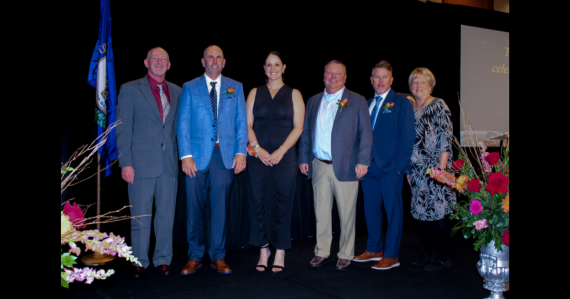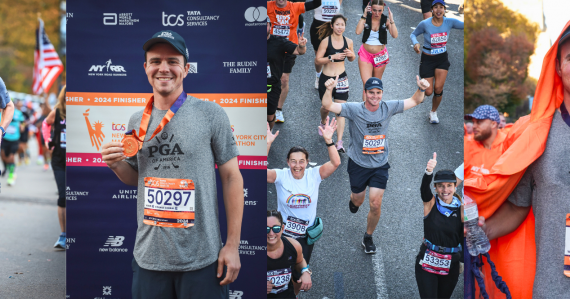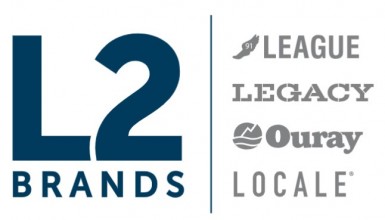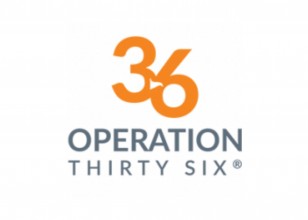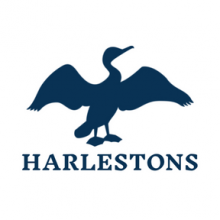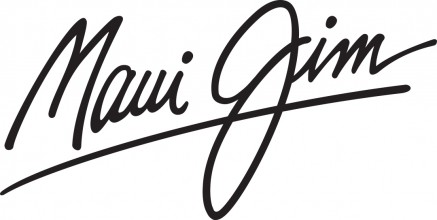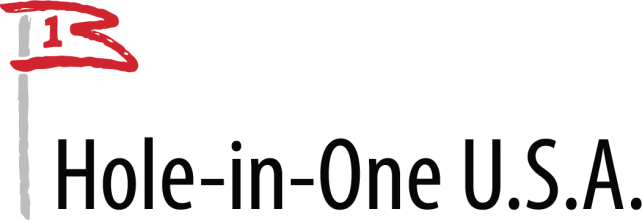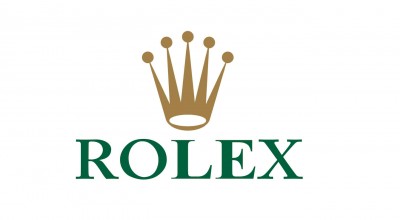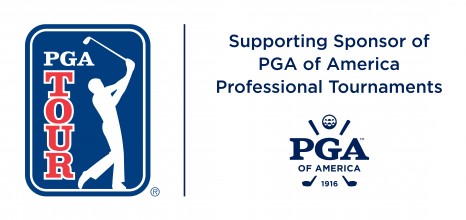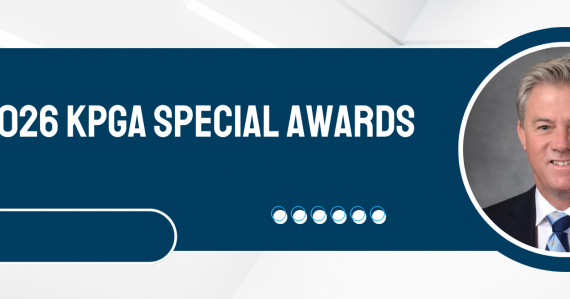
News
A Career Decorated with History; A Glimpse at Ralph Landrum's Past
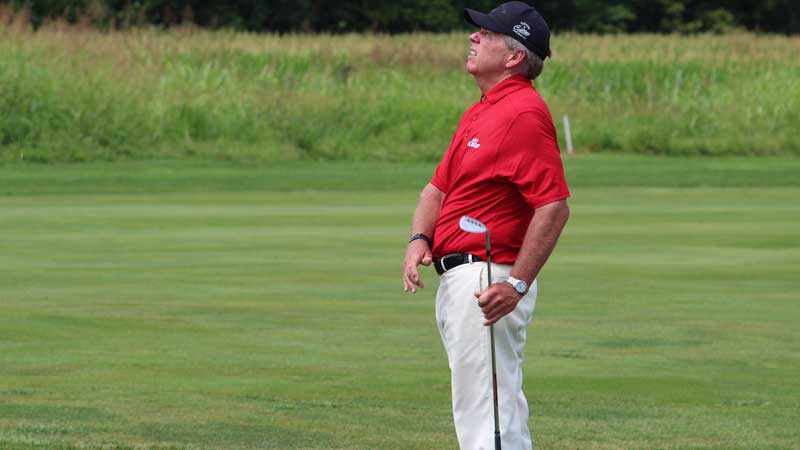
The 1986 and 1987 Kentucky PGA Professional Champion. The 1987 Kentucky Open Champion. Top-ten finisher in a U.S. Open. Multiple-time invitee to play in The Masters. Kentucky Golf Hall of Fame inductee. There is a plethora of ways one can label Ralph Landrum. In the present, he is the President and Head Golf Professional of World of Golf in Florence, a husband, father, and grandfather. The journey along the way to arrive at where he is today has taken him across the country with competitive experiences only a certain few get to experience.
Landrum’s introduction to golf was at Summit Hills Country Club in Crestview Hills where both of his parents were members. After doing some caddying at the club, Landrum’s experiences swinging the golf club himself confirmed that he had some talent in golf. While that turned out to be the case, his childhood was more dedicated to basketball than golf, as basketball has always been Landrum’s “first love.”
“I only played golf during my childhood from April until around the beginning of September,” Landrum recalled. “Everything else was dedicated to basketball, but when I was a sophomore or junior in high school my dad sat me down and said, ‘You have the same body as me.’ He pointed to himself and told me, ‘This body is not meant to play basketball. Play golf.’”
Play golf, he did. Landrum formed a life-long group of friends during his teenage years who he enjoyed playing with and it steered him towards a collegiate career with the Kentucky Wildcats.
“I had always been a fan of UK so it was cool to have the opportunity to play golf for them. Danny McQueen (a 2004 Kentucky Golf Hall of Fame inductee) was the coach at the time and I turned out to be his final recruit.”
Landrum’s golfing career at UK was a glimpse into his future playing professionally in that he encountered many close calls for individual titles but was never able to snag a victory as he amassed four runner-up finishes during his time with the Wildcats. Landrum’s fondest college golf memory was a team victory, however, as he and his teammates took down a loaded Ohio State team to secure a rare out-of-state team win for UK at the time.
“We were playing a tournament in West Virginia and Ohio State was the top team in the country with guys like John Cook and Joey Sindelar on their roster. Cook made a birdie on the last hole to beat me by a stroke to win the individual tournament, but it was not enough for them to overtake us in the team competition. It was a big deal for me and my teammates. Until J.B. Holmes came to UK, the team never won much outside of state lines.”
Landrum left UK to pursue a career on the PGA Tour after his third year of college, but one of his first experiences on golf’s top stages came in 1978 when he received an invitation to play in that year’s Masters Tournament. Landrum earned his spot by reaching the semifinals in the 1977 U.S. Amateur and was set to compete in arguably the most prestigious competition in the sport. While it seems commonplace now with today’s Masters participants playing Augusta National for practice rounds in the weeks leading up to the event, that opportunity was unknown to Landrum when he entered his final preparations.
“The winter in Kentucky before that year’s Masters was one of the worst the state has ever had so I was unable to practice much at home before heading down there. So my wife Mary Pat and I went to Myrtle Beach where I started attempting to get my game in shape for Augusta. Nobody ever told me you could go play practice rounds at Augusta National before the week of the tournament and this was all before the internet was around, so I did my research on Augusta National by going to the library and reading books about The Masters during the months leading up to the tournament.”
Landrum’s first Masters experience was a difficult one but something he expected and was not going to spoil an amazing week. Landrum missed the cut that week and did the same in his second and final Masters Tournament in 1984 but experiencing Augusta National as a player was an experience unlike any other.
“I got to Augusta on the Monday of that week and I pull up to the security gate leading to Magnolia Lane. A security guard comes out of the kiosk, looks at my car, walks around and peeks through the windshield to see me driving, comes up to my window and says, ‘Mr. Landrum, welcome to Augusta National. Please drive ahead and have the best week of your best life.’ It was incredible. I have no idea how this security guard knew it was me but it was that kind of moment only Augusta can provide and it was a tremendous indicator of how things operate there. Golf course-wise, the fifth hole really stood out to me as a great, hard hole. With that tee box tucked way back in the corner, it is one of the coolest holes I have ever seen and is a bit underrated. I know I hit a couple balls in the water on the twelfth, but there is not another golf course in the world like it. The trees are placed so strategically and otherwise it is actually a bit of an open property. And if you have not been to Augusta, you could never believe how much elevation change there is across the property.”
That second Masters invitation Landrum received came by virtue of his career-best finish in a major championship, when he finished in a tie for eighth place at vaunted Oakmont Country Club in the 1983 U.S. Open. To make it to Oakmont, Landrum had to first advance through U.S. Open Sectional Qualifying, which he did in great style by taking medalist honors in the Cincinnati Sectional by multiple strokes. With his confidence high and expectations set for the top, Landrum’s third round put himself in position to contend in the final round. After opening with rounds of 75 (+4) and 73 (+2) on Thursday and Friday, Landrum fired a 69 (-2) on Saturday which left him five strokes off the lead heading into the final round. The names in front of him were a who’s who among golf’s brightest stars in the early 80s, with Seve Ballesteros, Tom Watson, Larry Nelson, Raymond Floyd, Andy North, and Hal Sutton among those in front of him.
“On that Saturday I was paired with Tom Weiskopf and I said to myself before the round, ‘This is your chance to beat a Hall of Famer.’ This was my chance to compete. I played a great round that day and when we finished, Jack Whittaker comes up to me as we are in the scoring area to tell me he wants to do an interview with me. At first, I was like, ‘Who, me?!’ Why would someone like Jack Whittaker want to talk with me? Next thing I know, here I am doing an interview on national television with him. After it ended, a Pennsylvania state trooper comes up to me and says, ‘Mr. Landrum, it is my job to get you up to the clubhouse. Please follow me.’ I kind of laughed and told him that he did not have to get me up there. I start walking on my own and all of the sudden a swarm of people are grabbing at me, throwing pens at me, asking for autographs, and I could barely move. Then this strong hand grabs my arm and it was the state trooper coming up to tell me, ‘Mr. Landrum, it is my job to get you to the clubhouse. If you follow me, I can get you there.’ I made sure to listen that time and I got to the clubhouse, but moments like that are among the things you just cannot prepare for. You can practice as much as you want, but nobody will ever be ready for scenarios like that.”
For the final round, Landrum was paired with Roger Maltbie, who is now most well-known for his commentary on NBC and Golf Channel. A 74 (+3) final round from Landrum would not be enough to get it done, as Larry Nelson shot 67 (-4) to come from behind and win his second of three major championships by one stroke over Tom Watson. Landrum’s focus at the end of his round instead shifted towards receiving one of the automatic invitations for the next year’s Masters, as at that time the top 16 U.S. Open finishers would get the nod for Augusta. Landrum came to the final hole sensing he was right on the brink of that cutoff and felt like he needed par to lock up his second Masters invitation.
“I hit a really good tee shot on the last that just skipped into the rough and as Roger and I were preparing to hit our second shots, the horn blows because of incoming weather. Now at that time, ensuing lightning meant you were not forced to stop playing; you could finish the hole you were playing like how it is today for a suspension of play because of darkness. Roger was playing terribly, and I knew he wanted to get this over with, so we went ahead and finished up. My approach ends up missing the green by a slight margin, but I had a tough up and down that I was telling myself I had to manage to get that spot in Augusta. I hit a great chip shot to about three feet and here I am grinding over this putt I have made thousands of times in the past year, meanwhile spectators are scurrying for shelter in a panic. I told myself, ‘You cannot miss this putt.’ And I made it dead center. I go to the scoring area where Roger already is and he is laughing hysterically about something before saying, ‘You thought you needed to make that putt to make it in The Masters, huh? Well, you could have four-putted and still made it there.’”
Landrum went on to finish eleven shots behind Nelson for what would be Landrum’s lone top-ten finish in a major. The following year in Memphis, Landrum found himself with his best opportunity to win a PGA Tour event. Lurking a few strokes behind throughout the final round, Landrum got to the 16th hole with a long-range birdie putt that he drained to officially put himself in the thick of the competition. A perfectly-played 17th hole led to Landrum having a birdie putt from just outside of ten feet that would have put him in or near the driver’s seat entering the last hole. Landrum recalled hitting an excellent putt that tailed off at the last second, lipping out and resulting in a par. With the final hole being a risk-reward par-five, a tee shot akin to his final tee shot at Oakmont the previous year occurred which put him in the rough by mere feet. Citing the percentage play, Landrum laid up to his favorite yardage before striking his third shot about thirty feet past the hole thanks to the adrenaline rush he had. A two-putt par gave him a score of 282 (-6) which Bob Eastwood bested by two strokes to claim victory.
Landrum’s run on Tour slowed down as the decade progressed, but he claimed his Kentucky Open title at Frankfort Country Club in 1987 plus his Section Championships before concentrating on a new venture in the form of golf course management. In the thirty or so years since shifting to the business side of the golf industry, Landrum now serves as the President and Head Golf Professional of World of Golf in Florence where he also serves as the go-to instructor for the facility’s visitors. With an eighteen-hole executive golf course, foot-golf, mini golf, one of the largest driving ranges in Northern Kentucky to go along with indoor hitting bays, plus state-of-the-art teaching and fitting centers, the facility is a must-see for folks with any sort of golfing enthusiasm. Landrum has taken many of those younger people as students and helped their love for the game blossom.
“Every kid that has ever come to World of Golf just wanted the chance to play. Golf is a great thing for kids to be around; golf courses are safe-havens where they can get exercise and feel good about themselves. I like the mentoring aspect of my role and I feel fortunate to be someone people come to because they are essentially telling me, ‘Help me have more fun in life.’ When people have problems with most things in life, they go see someone because they get angry about a bill, their taxes or whatever it is that is inconveniencing them. They come to me so they can get more enjoyment in their life.”
World of Golf is a member of many golf-growth activities that include Youth on Course, PGA Junior League and Get Golf Ready among many others. As Landrum and his staff continually develop their customers’ golf games, many of his students and employees have gone on to find professional success both inside and outside of the golf industry, which is what Landrum considers his proudest achievement in his career. As time progresses, Landrum would like to continue doing anything he can to improve a golf course’s guest experience. Whether that is greeting and welcoming people to a facility, teaching them or something entirely different, Landrum is happy to be around the game. As long as he is, Landrum’s experiences and connections to some of golf’s grandest theatres will continue to trickle throughout multiple generations and preserve Kentucky’s rich golfing history.


